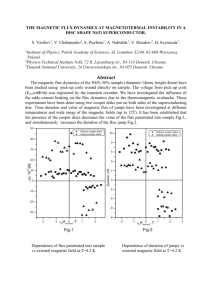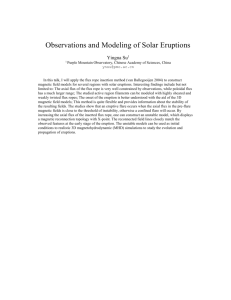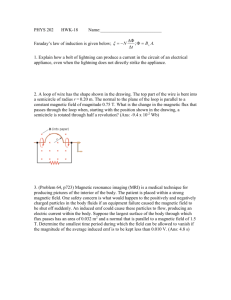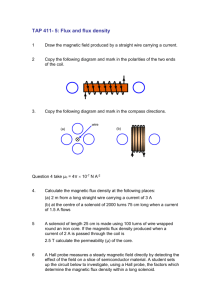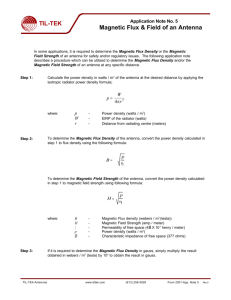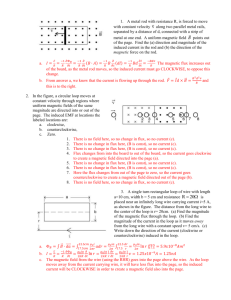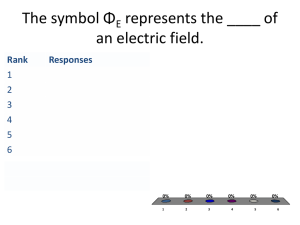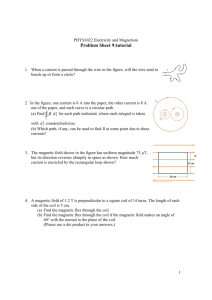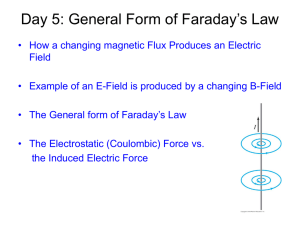EE369 POWER SYSTEM ANALYSIS
advertisement
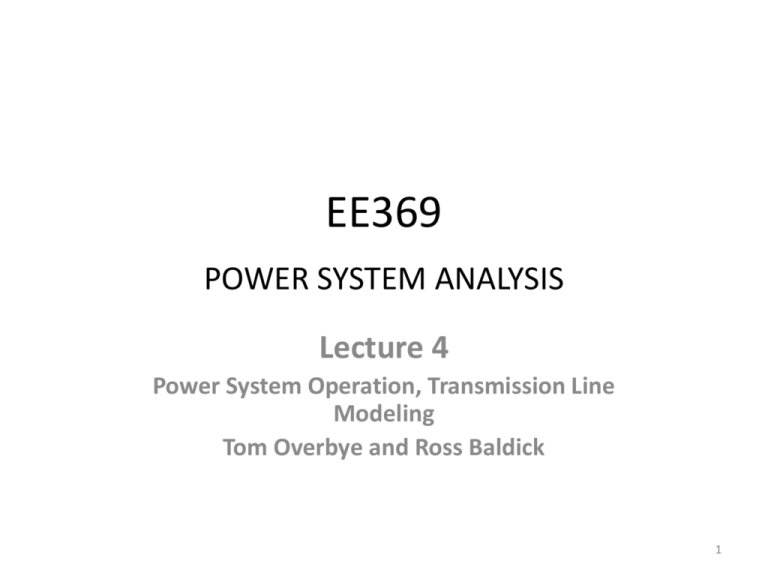
EE369 POWER SYSTEM ANALYSIS Lecture 4 Power System Operation, Transmission Line Modeling Tom Overbye and Ross Baldick 1 Reading and Homework • For lectures 4 through 6 read Chapter 4 – We will not be covering sections 4.7, 4.11, and 4.12 in detail, – We will return to chapter 3 later. • HW 3 is Problems 2.43, 2.45, 2.46, 2.47, 2.49, 2.50, 2.51, 2.52, 4.2, 4.3, 4.5, 4.7 and Chapter 4 case study questions A through D; due Thursday 9/17. • HW 4 is 2.31, 2.41, 2.48, 4.8, 4.10, 4.12, 4.13, 4.15, 4.19, 4.20, 4.22, due Thursday 9/24. • Mid-term I is Thursday, October 1, covering up to and including material in HW 4. 2 Development of Line Models • Goals of this section are: 1) develop a simple model for transmission lines, and 2) gain an intuitive feel for how the geometry of the transmission line affects the model parameters. 3 Primary Methods for Power Transfer The most common methods for transfer of electric power are: 1) Overhead ac 2) Underground ac 3) Overhead dc 4) Underground dc The analysis will be developed for ac lines. 4 Magnetics Review Magnetomotive force: symbol F, measured in ampere-turns, which is the current enclosed by a closed path, Magnetic field intensity: symbol H, measured in ampere-turns/meter: – The existence of a current in a wire gives rise to an associated magnetic field. – The stronger the current, the more intense is the magnetic field H. Flux density: symbol B, measured in webers/m2 or teslas or gauss (1 Wb /m2 = 1T = 10,000G): – Magnetic field intensity is associated with a magnetic flux density. 5 Magnetics Review Magnetic flux: symbol , measured in webers, which is the integral of flux density over a surface. Flux linkages , measured in weber-turns. – If the magnetic flux is varying (due to a changing current) then a voltage will be induced in a conductor that depends on how much magnetic flux is enclosed (“linked”) by the loops of the conductor, according to Faraday’s law. Inductance: symbol L, measured in henrys: – The ratio of flux linkages to the current in a coil. 6 Magnetics Review • Ampere’s circuital law relates magnetomotive force (the enclosed current in amps or ampturns) and magnetic field intensity (in ampturns/meter): F H dl I e F = mmf = magnetomotive force (amp-turns) H = magnetic field intensity (amp-turns/meter) dl = Vector differential path length (meters) = Line integral about closed path (dl is tangent to path) I e = Algebraic sum of current linked by 7 Line Integrals •Line integrals are a generalization of “standard” integration along, for example, the x-axis. Integration along the x-axis Integration along a general path, which may be closed Ampere’s law is most useful in cases of symmetry, such as a circular path of radius x around an infinitely long wire, so that H and dl are parallel, |H|= H is constant, and |dl| integrates to equal the circumference 2πx. 8 Flux Density •Assuming no permanent magnetism, magnetic field intensity and flux density are related by the permeability of the medium. H = magnetic field intensity (amp-turns/meter) B = flux density (Tesla [T] or Gauss [G]) (1T = 10,000G) For a linear magnetic material: B = H where is the called the permeability = 0 r 0 = permeability of freespace = 4 10-7 H m r = relative permeability 1 for air 9 Magnetic Flux Magnetic flux and flux density magnetic flux (webers) B = flux density (webers/m 2 or tesla) Definition of flux passing through a surface A is = A B da da = vector with direction normal to the surface If flux density B is uniform and perpendicular to an area A then = BA 10 Magnetic Fields from Single Wire • Assume we have an infinitely long wire with current of I =1000A. • Consider a square, located between 4 and 5 meters from the wire and such that the square and the wire are in the same plane. • How much magnetic flux passes through the square? 11 Magnetic Fields from Single Wire • Magnetic flux passing through the square? Direction of H is given by the “Right-hand” Rule • Easiest way to solve the problem is to take advantage of symmetry. • As an integration path, we’ll choose a circle with radius x, with x varying from 4 to 5 meters, with the wire at the center, so the path encloses the current I. 12 Single Line Example, cont’d H dl 2 xH I H I 2 x H is perpendicular to surface of square 2 104 2 B 0 H 0 T Gauss For reference, 2 x x x the earth’s 5 0 I magnetic field is A B dA (1 meter) 4 dx about 0.6 Gauss 2 x (Central US) I 5 5 7 0 ln 2 10 I ln 2 4 4 I 4.46 105 Wb 13 Flux linkages and Faraday’s law Flux linkages are defined from Faraday's law d V = , where V = voltage, = flux linkages dt The flux linkages tell how much flux is linking an N turn coil: = N i i=1 If flux links every coil then N 14 Inductance • For a linear magnetic system; that is, one where B = H, • we can define the inductance, L, to be the constant of proportionality relating the current and the flux linkage: = L I, • where L has units of Henrys (H). 15 Summary of magnetics. I (current in a conductor) F H dl I e (enclosed current in multiple turns) B H (permeability times magnetic field intensity) A B dA (surface integral of flux density) N (total flux linked by N turn coil) L / I (inductance) 16
